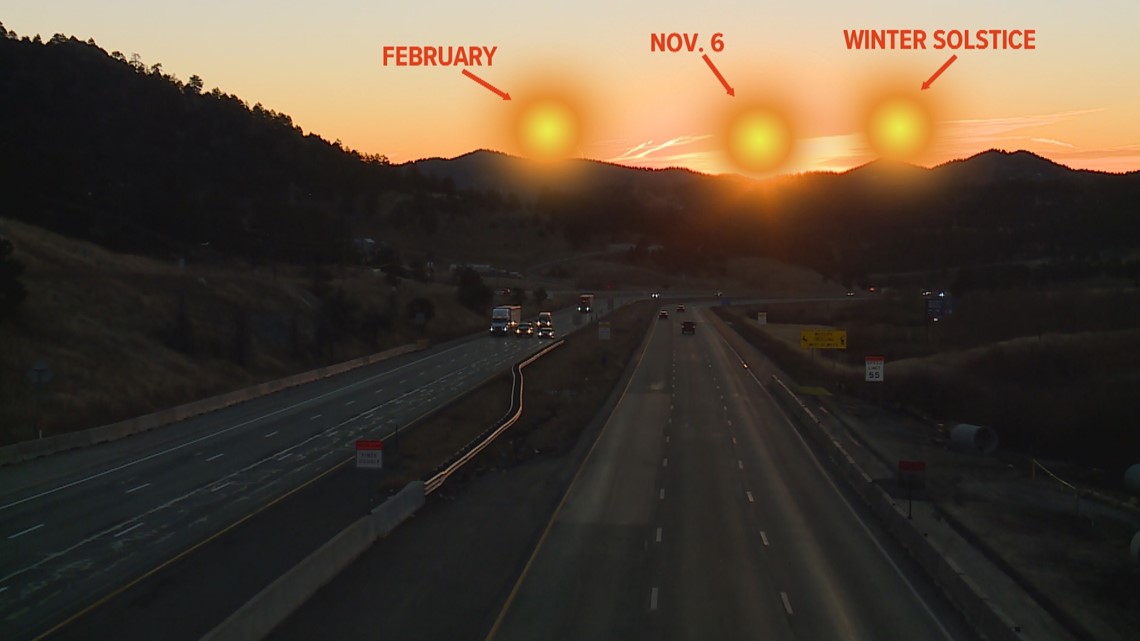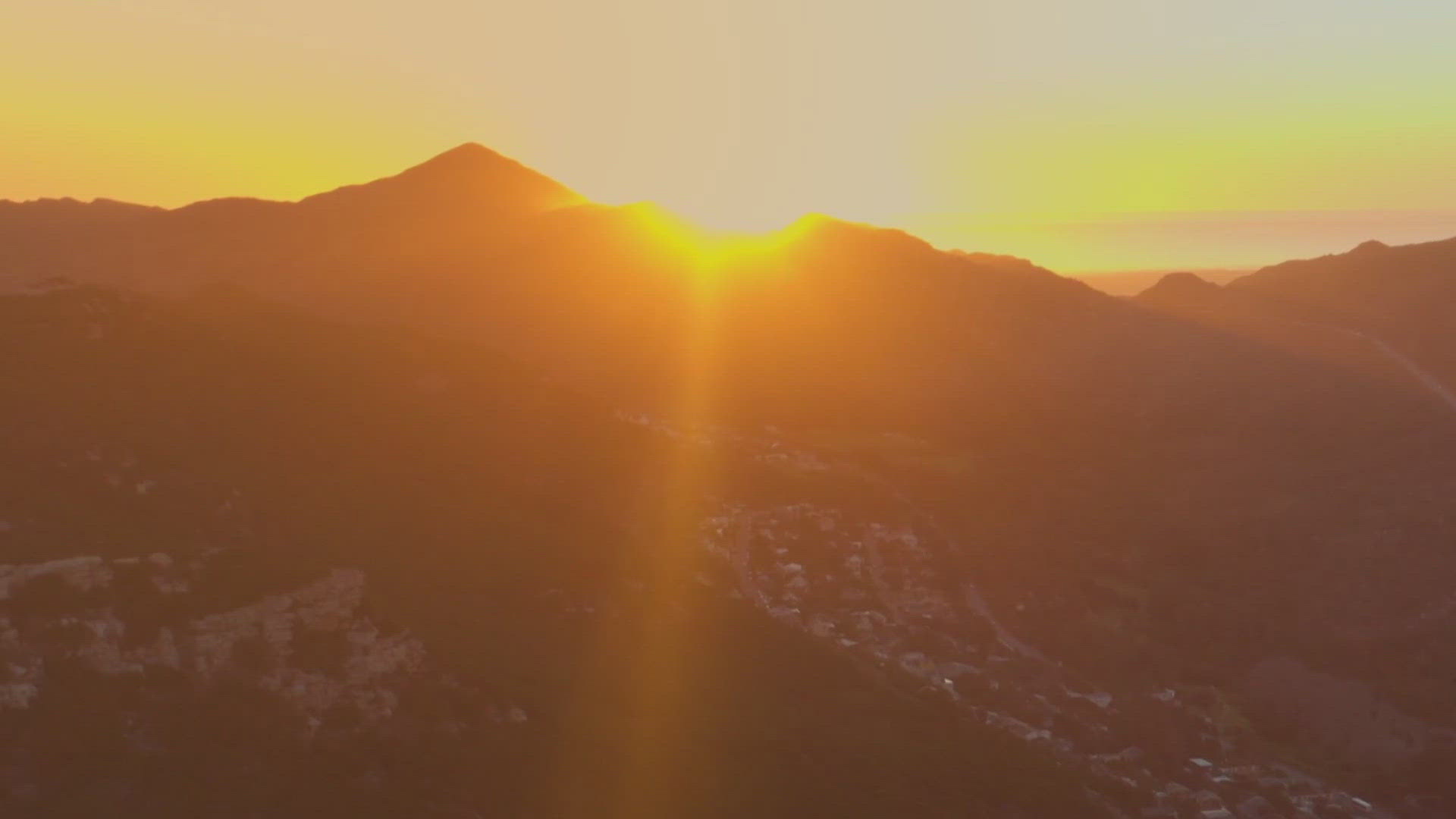CLEAR CREEK COUNTY, Colo. — The Colorado Department of Transportation is reminding drivers on eastbound Interstate 70 to be prepared for closures due to a potentially dangerous weather condition: clear skies.
Sun glare season is here, which means on sunny mornings, eastbound I-70 at Floyd Hill, east of Idaho Springs, will close from sunrise to 8:30 a.m., when the eastbound sun glare can become blinding for drivers.
The first closure could occur as soon as Sunday, and closures will be in effect on sunny mornings through February. The decision to close is made on a case-by-case basis each morning with collaboration between CSP and CDOT workers stationed near Floyd Hill.
When closures occur, CDOT said, drivers on eastbound I-70 should be prepared for delays of up to an hour.
I-70 isn't the only road affected by sun glare. It can be potentially hazardous at sunrise on any road that leads east, but, the Colorado State Patrol said, there are some factors that make I-70 particularly dangerous.
For one, it's the angle of the sun. In the winter months, the sun stays low on the horizon for longer. That's a common issue for all east-facing highways.
The angle of I-70’s incline is unique. Because of the elevation, it puts the sun right at road level as you come over the hill. It’s a spot that even a fully extended sun visor can’t shade completely.
This also intensifies the glare when the road surface is wet or icy.
The angle that I-70 points, toward the southeast, also puts the sun in a dangerous position this time of year. The sun reaches its farthest south by the winter solstice, then it works its way back across the road as the sunrise gets more northerly each day until February, when it finally takes a steeper angle into the sky and also starts out blocked behind the foothills.


Detour route for I-70 sun glare closures
CDOT said if a sun glare safety closure is in place along eastbound I-70:
- Traffic headed eastbound on I-70 will be rerouted at Exit 244 (U.S. 6), which is at the bottom of Floyd Hill.
- Motorists can either stay the course on U.S. 6 through Clear Creek Canyon, or they can take the eastbound I-70 frontage road (U.S. 40) and get back onto I-70 at Beaver Brook (Exit 248).
- Truckers should be aware, there are height restrictions in the tunnels along U.S. 6 Clear Creek Canyon. No vehicles over 12 feet and 7 inches can travel this route.
- The closures average around 45 minutes to an hour and can occur between sunrise and 8:30 a.m. from November through February each year.
Drivers who travel eastbound I-70 in the early morning hours during fall and winter are urged to pay attention to the overhead message boards beginning just east of the Eisenhower Johnson tunnels. The signs will have the latest information on sun glare closures. Drivers can also check the travel alerts by going to COtrip.org.
Sun glare safety tips
CSP has a few recommendations for safer driving at sunrise:
- Wear polarized sunglasses with UV protection.
- Clean your windshield, inside and out.
- Top off the wiper fluid, to help maintain a clean windshield.
- Use slower speeds to increase reaction time.
Sun glare forecast
Mountain drivers probably check for possible winter weather on their smartphone apps before driving, and they can do the same thing to forecast sun glare.
On your favorite weather app, select Evergreen, CO as the location. That will give you the forecast very close to Floyd Hill. Then select the weather forecast to be displayed hourly.
Look at the icons between 6 and 8 a.m. If they show full sun, then expect there to be a closure. If there is a partly cloudy icon, expect there to still be a chance for a closure.
If you drive a different highway that faces east in the morning, you can use the same forecasting technique to know what type of sun glare conditions to expect.

